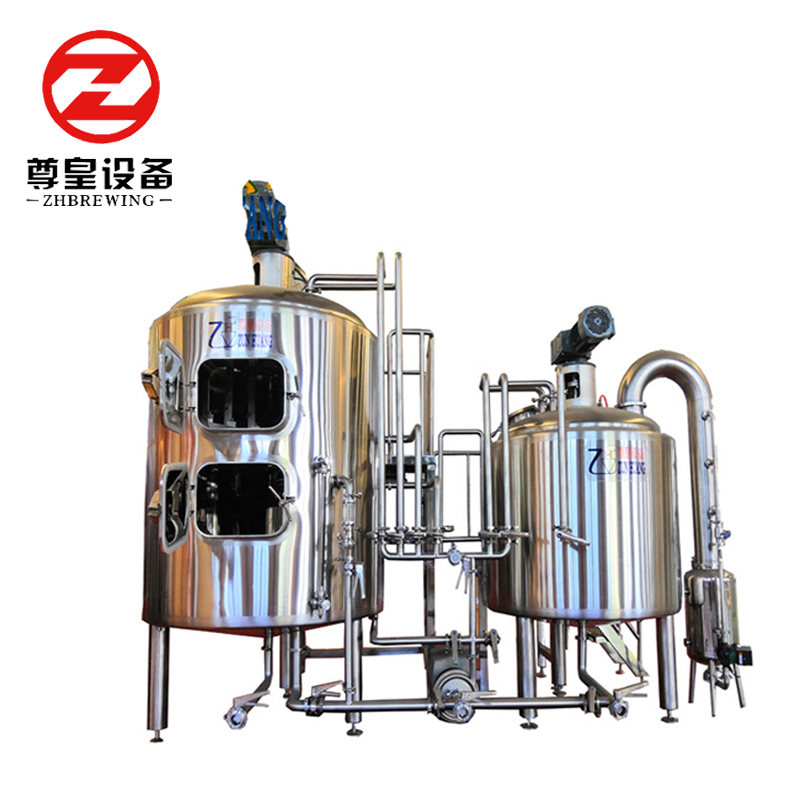
The items for beer inspection include alcohol content, true concentration, original wort concentration, true fermentation degree, color, turbidity, bitterness, bubble retention, dissolved oxygen, carbon dioxide, total acid,PH, diacetyl, etc.
Although the alcoholicity, bitterness, color and other parameters of beer can be calculated based on the raw materials used, the calculated values deviate from the actual values due to factors such as raw materials, equipment, operation, and environment. The value is difficult to calculate and can only rely on testing.
The accurate data obtained through beer inspection can help us better understand the beer we brew and determine what problems our brewed beer has, thereby improving Brewed beer level.
Bitterness is not a very pleasant taste, and most people are very sensitive to bitterness. But most of the suffering we have suffered in this world is worth it. The bitterness of beer comes from hops, which bring clean or strong bitterness to beer, and also bring charming fruit aroma and floral aroma to beer. Of course there are also beers that are not hopped, such as local Americanroot beer,But I believe most people will not like the taste.
The unit of measuring beer bitterness isIBU(International Bitterness Unit,International Bitterness Unit)。0Means no bitterness,120Represents extremely high bitterness, such asImperial IPA和American Barley Wine,The bitterness of most beer is between 10-40. One IBU unit is equivalent to one milligram of iso-α-acid in one liter of beer. The amount depends on the amount of hops, the content of α-acid, and the cooking time.
Tip: Because all aspects of hop storage and filtration, water quality, yeast type, fermentation temperature, brewing equipment, etc. will affect the bitterness of beer, the calculated bitterness value may deviate from the actual bitterness of the beer, so it is more The exact bitterness value requires actual testing.

Alcohol is the saccharified wort that undergoes yeast fermentation to convert sugar into alcohol, carbon dioxide, and other ester alcohols, that is, the alcohol content in the body after fermentation, expressed in %vol (for example, the alcohol of Lion Cat wheat beer Degree is ≥3.7%vol), and it is generally expressed by acl/vol abroad.
Generally speaking, the higher the initial wort concentration, the higher the alcohol content obtained after the final fermentation. However, in reality, yeast is basically impossible to eat 100% of the sugar in the wort. The amount of residual sugar determines the sweetness of this bottle of wine.
Alcohol is a by-product of yeast metabolism and has certain damage to the vitality of yeast; under normal circumstances, brewing yeast cannot survive in an environment with an alcohol content of more than 12%. The alcohol content of general beer is usually below 3% to about 14%. In recent years, the alcohol content of beer has continued to rise, and the maximum value of refrigerated distillation has exceeded 40%.
The alcohol content (ABV) is calculated based on the initial specific gravity (OG) and final specific gravity (FG) of the wort before and after fermentation.
Calculation formula: ABV = (OG-FG) x 131.3
It can also be calculated using the initial brix (OP) and end brix (FP).
Calculation formula: ABV = (OP-FP) x 0.53
The original wort concentration refers to the sugar content of the wort. The malt is saccharified and made into wort. The percentage of the concentration of the wort after boiling and cooling is the original wort concentration, which is marked with °P. (For example, the original wheat concentration of Lion Cat wheat beer is 11°P)
Low concentration type: wort concentration at 6°P~8°P, medium concentration type: wort concentration at 10°P~12°P high concentration type: wort concentration at 14°P~20°P
In general, the higher the original wort concentration, the more malt raw materials are put into this wine, the better the nutritional value, while the foam is delicate and long lasting, the wine tastes mellow and soft, and the shelf life is relatively extended. Therefore, the "original wort concentration" is a hard reference indicator for identifying beer.
In the detection of beer color, my country's "Beer Analysis Method" (GB/T4928-2008) provides two methods: colorimeter method and spectrophotometry.
Colorimeter method (first method):The principle is to inject the degassed sample into the cuvette of the EBC colorimeter, compare it with the standard EBC colorimeter, visually read or automatically digitally display the chromaticity of the sample, expressed in the chromaticity unit EBC.
Spectrophotometry (Method 2):The principle is that the darker the color of beer, the greater the absorbance value at a certain wavelength, so the absorbance value can be measured directly, and then converted into EBC units to indicate chromaticity.
Next, several commonly used detection methods are introduced:
SRM is the abbreviation of Standard Reference Method (Standard Reference Method) formulated by the American Brewing Chemists Association, which is used to express beer color;
In addition, we often see Lovibond(°L) values, which are usually used to express the color of malt. Generally, 1°L malt produces 1 SRM beer color.